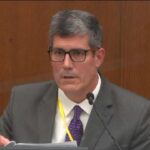
The Federal Emergency Management Agency (FEMA) says it has enough money to handle the impacts of Hurricane Idalia but that money will not last forever.
FEMA Director Deanne Criswell said the agency has $3.4 billion left in its coffers to handle present disasters in Hawaii and Florida, but she is asking Congress for more assistance, as is Sen. Rick Scott, R-Fla.
Scott is pushing a vote in the Senate next week to “plus-up” the depleted account to address immediate breakdowns.
Here is how federal disaster relief works:
There are two pots of money to consider.
The first is what FEMA covers immediately in the aftermath of a tornado, earthquake, hurricane, wildfire, ice storm, blizzard or flood.
That comes from the Disaster Relief Fund (DRF) or “DURF” as it is known in appropriations circles. That pot is full now, but the wildfire in Hawaii drew down the Disaster Relief Fund. Hurricane Idalia will drop that figure even lower. Moreover, the U.S. is about to enter the 12th month of the federal government’s fiscal year, so the balances are already low. That is why Scott and others will demand a vote to replenish the DRF. It is a problem if the account is bare and there is another hurricane or some other natural disaster.
Criswell is already requesting that Congress approve a $12 billion “bridge” to get through the rest of the fiscal year.
FLORIDA SEN RICK SCOTT DEMANDS ‘IMMEDIATE’ DISASTER RELIEF VOTE AS HURRICANE IDALIA MAKES LANDFALL
The broader question is what Congress may appropriate to address the longer term impacts of the wildfires on Maui and Hurricane Idalia. That may take weeks or months to assess, and that price tag could be significant.
The government could shut down if Congress fails to approve an interim spending bill by Oct. 1, the end of the fiscal year. House Speaker Kevin McCarthy, R-Calif., is already pushing a stopgap spending package to keep the federal lights on.
So, lawmakers could do a standalone bill as Scott is pushing. However, the more likely scenario is that lawmakers attach the emergency money for FEMA to refill the DRF to an interim spending bill before the end of September.
If it is determined that Maui and Florida require a more substantial aid package, Congress could craft that bill later this year as a standalone, latch it again to another spending bill to avert another shutdown later in the fall or the winter, or even attach the broader disaster aid package onto a combination of spending bills. Lawmakers sometimes call these “minibuses.” That is because it is not an “omnibus” bill.
HURRICANE IDALIA PREDICTED TO ‘MAKE HISTORY’ AS STORM SURGE BARRELS COASTAL COMMUNITIES
Twelve annual spending bills run the federal government. Emergency money for disasters in any form is known as a “supplemental” spending package. In other words, a “13th” or possibly “14th” spending measure, on top the customary 12.
However, this is where foreign policy enters the picture.
There is a stark divide among Republicans about providing aid to Ukraine. President Biden has already made a supplemental spending request to Congress to assist Ukraine. So, is that a “15th” spending bill?
Probably not.
FLORIDA GOOD SAMARITAN HELPS DRIVER STUCK IN HURRICANE IDALIA FLOODWATER
Only so many legislative trains depart each year from the appropriations train station. Congress rarely tackles the 12 annual appropriations bills on an individual basis anymore. Lawmakers usually dump all federal spending into a massive “omnibus” spending package which tackles all discretionary spending (the portion of spending which Congress controls, not “entitlements” like Medicare, Medicaid and Social Security) in a fiscal year. Or, Congress may do several “minibuses” or stopgap measures. So, if there is additional disaster aid in any form, or money for Ukraine, it is likely lawmakers mash it together in a broader bill.
That said, it is not out of the question that lawmakers do a supplemental spending bill for FEMA or down the road after the damage assessments from Hawaii and Florida are complete. It is less likely that Congress would do a supplemental spending bill just for Ukraine.
In short, disaster money and Ukraine money probably ride together somewhere. Why? This is called “logrolling” on Capitol Hill. Congressional leaders begin “rolling” the appropriations logs down Capitol Hill. Lawmakers are reluctant to step in the way to stop the logs, lest they get run over.
Imagine a lawmaker who needs disaster aid, but opposes assistance for Ukraine. Will they oppose that bill? Hard to say once the logrolling begins.
Attaching the semi-unpopular Ukraine aid to the more popular disaster aid package enhances the chances that both spending packages pass. Congress does these combo bills all the time.
That said, even before Idalia was on the radar, Sen. Marco Rubio, R-Fla., pushed to separate the disaster money from Urkaine assistance.
A number of high-profile lawmakers are now heading to Hawaii to survey the damage and assess needs there.
The severity of the storm will intensify the spending debate on Capitol Hill as Congress returns to session.
Scroll down to leave a comment:









